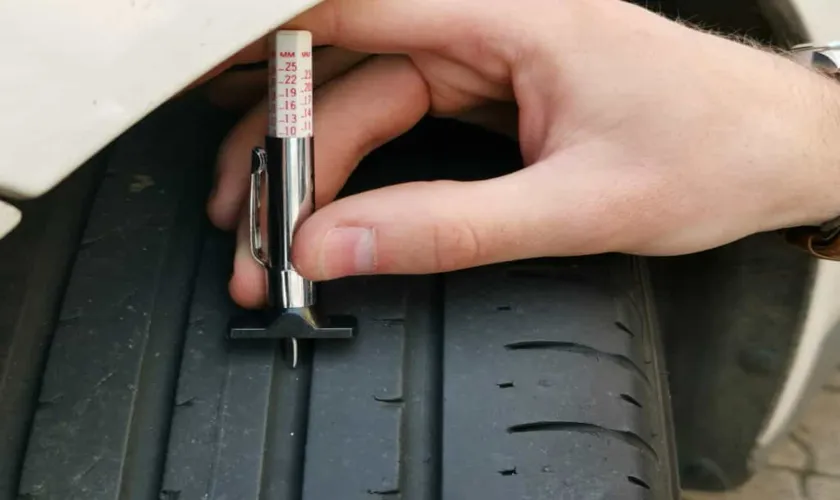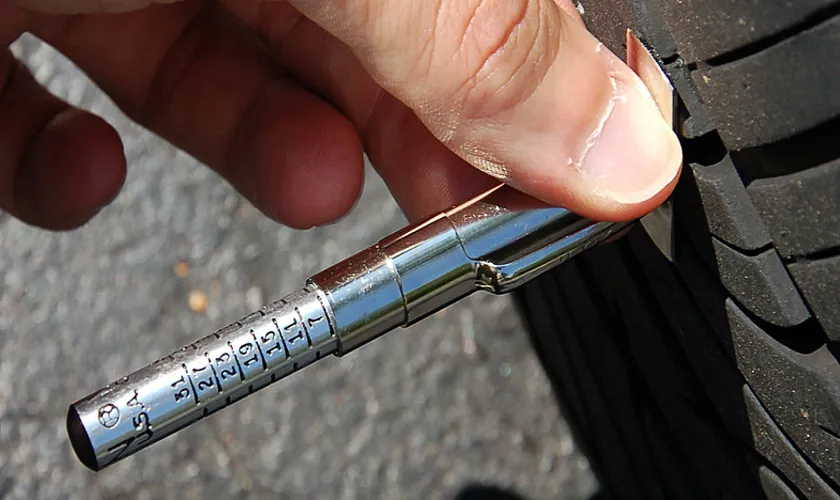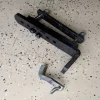Have you ever wondered about the condition of your tire treads? It’s important to know how much traction your tires have left for optimal safety and performance on the road. Reading a tire tread gauge is an easy way to determine the depth of your tire treads, but many people don’t know how to use one. This simple tool can help save you money by detecting tire wear early on and improve your driving experience by ensuring you have enough grip on the road.
In this blog, we’ll show you how to read a tire tread gauge and explain why it’s essential to do so regularly.
Table of Contents
What is a Tire Tread Gauge?
Have you ever wondered how to read a tire tread gauge? Well, a tire tread gauge is a small tool that allows you to measure the depth of the treads on your tires. It’s an essential tool to check your tire treads and ensure they still have enough rubber for proper traction. When using a tire tread gauge, the measurement is read in increments of 32nds.
The gauge will have a sliding indicator that fits into the grooves of your tire’s tread. The reading will tell you how many 32nds of an inch remain. The general rule is that tire treads should never be less than 2/32 of an inch to ensure proper traction on wet and slippery roads.
Remember, regular checks with a tire tread gauge not only ensure your safety on the road but also help extend the life of your tires.
Definition and Importance of Using One
A tire tread gauge is a device used to measure the depth of a tire’s tread. The depth of tread on your tires is important because it affects the overall handling and safety of your vehicle. A tire with worn-out tread is more likely to lose traction, causing the vehicle to skid or slide during braking or turning.
This can be especially dangerous in wet or icy conditions. Using a tire tread gauge is a simple and effective way of ensuring that your tires are safe to drive on. By measuring the depth of the tread, you can determine whether your tires need to be replaced or if they still have some life left in them.
Most tire tread gauges are easy to use, and you simply insert them into the grooves of your tire and read the depth measurement in millimeters. Overall, using a tire tread gauge is an important part of vehicle maintenance. By regularly checking the tread depth on your tires, you can ensure that your vehicle is safe to drive and avoid potential accidents or breakdowns on the road.
So make sure to keep a tire tread gauge handy in your vehicle’s glove compartment and use it regularly to keep your tires in top condition.

How to Use a Tire Tread Gauge?
If you’re wondering how to read a tire tread gauge, it’s a fairly straightforward process. First, ensure your tires are cold and haven’t been driven on for at least three hours. Then, insert the gauge into the shallowest part of the tread, where it has the most wear.
Make sure the gauge is flat against the tread, not at an angle. The gauge will give you a measurement in 32nds of an inch, which you can easily convert to millimeters if needed by multiplying by 0.
If your tread depth is 2/32″ or less, it’s time to replace your tires as they no longer provide adequate traction and are at risk of hydroplaning on wet roads. By regularly checking your tire tread depth with a gauge, you can ensure your tires are safe and ready for the road ahead.
Step-by-step Guide on Using a Tire Tread Gauge
If you’re looking to check your tire tread depth, using a tire tread gauge is the easiest and most accurate way to do it. Simply put, a tread gauge measures the depth of your tire’s tread, allowing you to determine if it’s time for a replacement. To use it, start by inserting the probe into the shallowest groove on your tire (usually around the outer edges).
Press down firmly until the gauge base is flush with the tread. The gauge will then indicate the depth in either millimeters or 32nds of an inch. If the reading is less than the recommended tread depth (usually 2/32 of an inch), it’s time to start shopping for new tires.
It’s important to check your tire tread regularly to ensure safe driving conditions, especially in wet or slippery conditions. Don’t wait until it’s too late – grab a tire tread gauge and start checking today.
Tips for Accurate Reading
Using a tire tread gauge may seem like a daunting task, but it is actually a simple process that can help you determine whether your tires are safe to drive on. First and foremost, it is important to ensure that your tires are cool before taking any measurements. Once you have located the tread depth gauge, place it between the grooves of the tire and press down firmly.
Take note of the number that lines up with the gauge’s base, as this indicates the depth of your tire’s tread. It is important to measure the tire tread depth in multiple places around the tire and to keep a record of the measurements over time. Generally, a tread depth of 2/32 inches or less is considered to be unsafe and warrants immediate replacement of the tire.
By regularly using a tire tread depth gauge, you can ensure that your tires are in good condition and avoid any potential safety hazards on the road.
When to Use a Tire Tread Gauge?
If you want to know when to use a tire tread gauge, it’s a good idea to check your tire’s treads on a regular basis. Tires with inadequate tread depth can lead to hydroplaning, poor handling, longer stopping distances, and even tire blowouts. A tire tread gauge is a simple and effective tool that can help you determine the tread depth of your tires.
To use it, you place the gauge between the treads of your tire and read the result indicated on the gauge. Most tread gauges come with specific markings that denote the minimum and maximum tread depths, and it’s best to use them as a reference point. If the tread depth falls below the minimum limit, it’s time to replace the tire.
By using a tire tread gauge, you can ensure that your tires are safe and durable, providing you with a smoother and safer driving experience.
Frequency and Significance of Checking Tire Treads
Knowing when to use a tire tread gauge can save you a lot of trouble on the road. Generally, it is recommended that you check your tire treads at least once per month. However, if you drive more frequently, or in harsher conditions, then checking more often is a good idea.
To check the tread depth, insert the gauge into the groove of the tire in three different places. Make sure you get an average reading of the tire tread’s depth. The depth should be at least 1/16 of an inch.
This is the minimum safe tread depth, but you may want to replace your tires earlier if they begin to wear out unevenly or quickly. When the tire tread depth is below the recommended safety level, it is time to replace your tires. Ignoring this can lead to skidding, loss of traction, and poor handling when driving.
Therefore, using a tire tread gauge and regularly checking your tires’ tread depth is essential for your safety and the safety of others on the road.
Conclusion
In conclusion, knowing how to read a tire tread gauge is essential for keeping your tires safe and durable. It may seem daunting at first, but with a little practice, you’ll be able to confidently measure your tire tread depth. So, next time you’re tempted to just eyeball it, remember: the life of your tires (and your loved ones) is in your hands.
Don’t be a treadhead, be a tread-deep thinker and keep those wheels rolling safely.”
Benefits of Using a Tire Tread Gauge and Ensuring Tire Safety
Tire Tread Gauge Using a tire tread gauge is an essential aspect of ensuring the safety and longevity of your vehicle’s tires. It’s an inexpensive tool that helps you measure the depth of your tire’s tread, which is crucial for maintaining traction and stability. When using a tread gauge, you can determine if your tires are in good condition or if they need replacing.
Any depth beyond 2/32 of an inch is considered safe; however, it’s still recommended to replace your tires when they reach 4/32 of an inch. So, it’s essential to use a tire tread gauge periodically to check the depth of your tires. It would be best to use it before planning a long trip or before adverse weather conditions, for better safety and performance on the road.
Using a tire tread gauge can help you avoid dangerous road situations, such as sudden blowouts, skidding or hydroplaning. Making sure your tires are checked regularly with a tire tread gauge can help keep you safe on the road and save you money by avoiding the need for a costly tire replacement.
FAQs
What is a tire tread gauge?
A tire tread gauge is a tool used to measure the depth of the tire tread.
Why is it important to measure the tire tread depth?
Measuring the tire tread depth is important because it determines the safety and performance of your vehicle.
How do you use a tire tread gauge?
To use a tire tread gauge, simply press the gauge against the tire tread and read the measurement.
What is the recommended tire tread depth for safe driving?
The recommended tire tread depth for safe driving is 2/32 of an inch or greater.
How often should you check your tire tread depth?
You should check your tire tread depth at least once a month and before long trips.
Can you use a penny to check tire tread depth?
Yes, you can use a penny to check tire tread depth by inserting it into the tread groove.
What should you do if your tire tread depth is below the recommended level?
If your tire tread depth is below the recommended level, it is best to replace your tires as soon as possible for optimal safety and performance.



